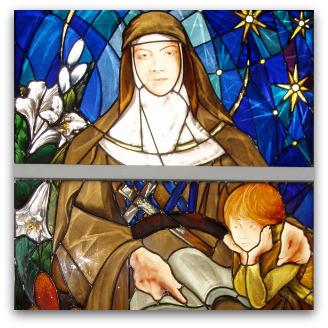By James Martin
Eureka Street
October 13, 2010
http://www.eurekastreet.com.au/article.aspx?aeid=23675
 |
The canonisation of Mother Mary MacKillop, the redoubtable co-foundress of the Sisters of St Joseph of the Sacred Heart, has been big news lately. Not just in Australia either. News about Australia's first saint is sufficiently noteworthy to warrant extensive coverage in newspapers, magazines and websites around the globe.
Lately, the media has focused on MacKillop's excommunication in 1870 and, specifically, how much of the local bishop's decision to eject her from the church centered on whether she had been personally connected to raising a charge of sexual abuse against a priest. The details of this complicated story seem to change almost daily.
But according to Paul Gardiner SJ, the postulator of her 'cause' for canonisation and an acknowledged expert on her life, MacKillop herself was not personally involved with raising the charge of abuse, though the sisters in her order apparently were. (The sisters reported the abuse to the co-founder of their order, Fr Julian Tenison Woods.)
The resulting controversy (especially the resulting anger of a friend of the accused priest, who had a malign influence over the bishop) was one of many factors that led to her excommunication by Bishop Laurence Sheil of Adelaide, out of a sense of vengeance. (Sheil rescinded the punishment five months later, on his deathbed.)
Earlier, Sheil had invited MacKillop to work in Adelaide, where she and her sisters would eventually set up schools, a women's shelter and an orphanage, among their many works. But MacKillop's independent spirit — even setting aside the abuse case — seemed to represent a threat to the bishop.
In the midst of the recent controversy, some charged that the media's focus on the excommunication was unseemly, and that the story of her order's involvement with the abuse charge detracted from the celebration of the canonisation. But to the contrary, MacKillop's involvement in the case, even if it consisted only in enduring the wrath of some of the local clergy for her sisters' actions, does not dim the luster of her holiness. It adds to it.
Whatever opprobrium, rejection or outright punishment MacKillop endured as a result of her sisters' standing up for a victim of sexual abuse, she can be properly seen be as someone drawn into the sexual abuse scandal a century before the rest of the Catholic Church was. As a result, she might be someone that victims and their families feel drawn to in prayer: a kind of patron saint for abuse victims.
The idea of a holy woman who had been at loggerheads with some members of the hierarchy—and was even excommunicated—is not new in the annals of the saints. The most recently named American saint, Mother Theodore Guérin, foundress of the Sisters of Providence of St.-Mary-of-the-Woods, was once locked into a room in a presbytery by her bishop, who was infuriated by her (similarly) independent spirit.
The canonisation of those who were once in trouble with the church shows that, in the long run, the Vatican has a clearer understanding of holiness than do some contemporary Catholics. Often holiness is conflated with being unthinking, uncritical or blindly obedient. But popes have often canonised saints who were held in contempt by some church leaders.
Even some of the most universally beloved saints found themselves in conflict with the church at times: St Joan of Arc, to take the most extreme example, was excommunicated by an English ecclesiastical court, and then burned at the stake as a heretic; St Ignatius of Loyola, the founder of the Jesuit Order, was locked in jail for a time by the Inquisition, who were suspicious of his ideas on prayer; St. Thomas Aquinas, perhaps the greatest of medieval theologians, found his own writings under ecclesiastical censure; and St Bernadette Soubirous, the visionary of Lourdes, was initially rejected by her local pastor, who refused to believe in her reports of her seemingly outlandish visions.
On a somewhat less exalted level, think of modern-day theologians like John Courtney Murray, Yves Congar and Henri de Lubac, who were either officially silenced or restricted in their teaching and writing, and then later 'rehabilitated', and in the case of Congar and de Lubac named cardinals.
The life of Mother Mary MacKillop cannot be reduced simply to the story of her excommunication. It was a full, active and holy life.
But neither is the story of her excommunication and her struggles with the local church unimportant. Her canonization shows the true wisdom of the Catholic church in recognizing the holiness of those that it once reviled, and even rejected.
Ultimately, the story of St. Mary's expulsion from the church, her readmission and her canonisation is not a scandal. It is a parable.
Any original material on these pages is copyright © BishopAccountability.org 2004. Reproduce freely with attribution.